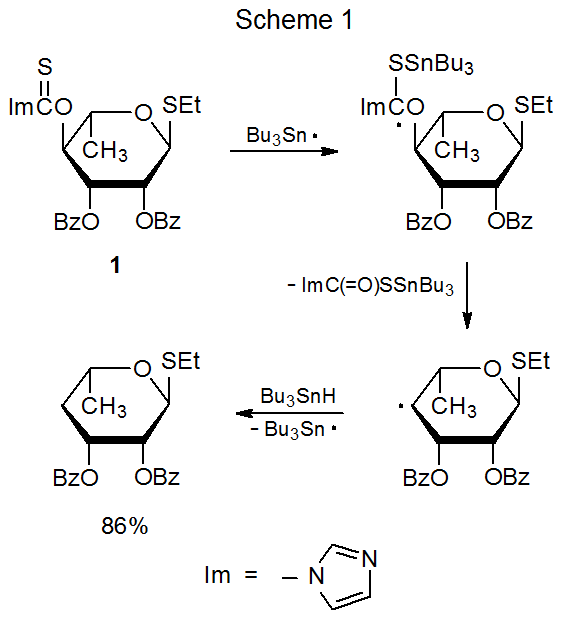9: Quimioselectividad
- Page ID
- 79398
Quimioselectividad es un término que describe la capacidad de un reactivo o intermedio para reaccionar con un grupo o átomo en una molécula con preferencia a otro grupo o átomo presente en la misma molécula. Dado que la mayoría de los radicales carbohidrato trazan sus inicios a reacciones que involucran un radical centrado en estaño [generalmente Bu 3 Sn·] o un radical centrado en silicio [generalmente (Me 3 Si) 3 Si·], la quimioselectividad en las reacciones de estos radicales juega un papel central en el radical carbohidrato formación. Un ejemplo de una reacción quimioselectiva se encuentra en el Esquema 1, donde el radical tri- n-butilestaño abstrae el grupo O-tiocarbonilo del tioglucósido 1 mientras que el grupo etiltio potencialmente reactivo permanece en su lugar. 1

La reacción quimioselectiva también puede ocurrir cuando un radical carbohidrato reacciona con otra molécula presente en la mezcla de reacción. Dicho proceso se muestra en el Esquema 2, donde el radical piranos-1-ilo 2 añade al doble enlace C-C en 3 más bien que reaccionando con el átomo de cloro o grupo fenilseleno también presente en esta molécula (3). 2


